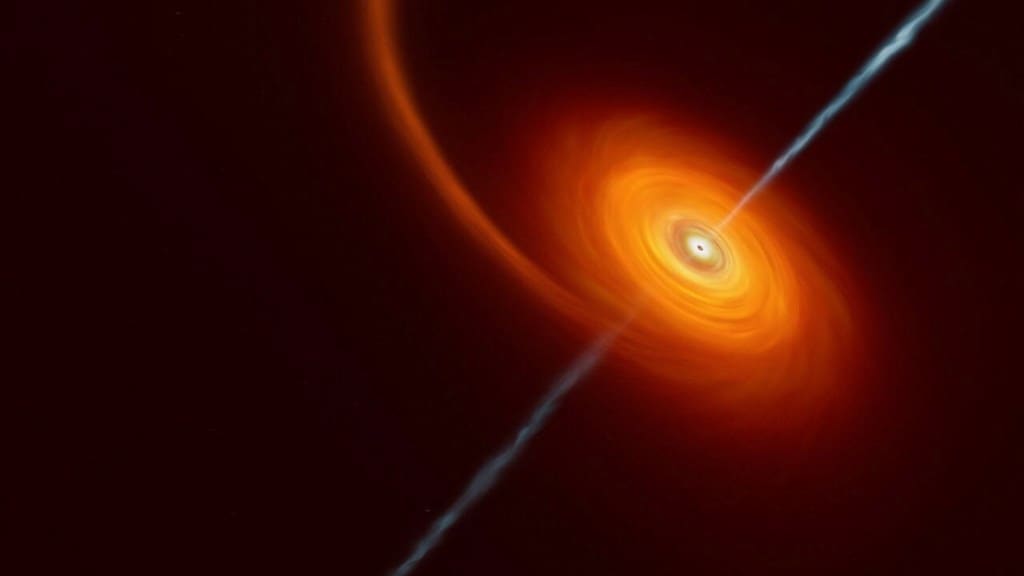In a groundbreaking revelation, India’s pioneering Space Astronomy Observatory, AstroSat, has spearheaded an international team to demystify the enigmatic X-ray binary system known as MAXI J1820+070, housing a black hole, ISRO announced on Tuesday. Let’s break down the terminology and the revelation for better understanding.
What are MAXI J1820+070 and X-ray binaries?
MAXI J1820+070, classified as a low-mass X-ray binary, features a black hole as its central compact object. X-ray binaries are distinguished by their emission of X-rays which consist of a normal star paired with a collapsed star. This could be a white dwarf, neutron star, or the elusive black hole, according to NASA.
The latest study by the international team titled ‘A Multi-Wavelength Spectral Study of MAXI J1820+070 in the Soft and Hard States’, unveils insights into the behavior of this transient black hole X-ray binary during its 2018 outburst, ISRO stated.
Helmed by researchers from the Inter-University Centre for Astronomy and Astrophysics, Pune, the collaborative effort extends across India, the United Kingdom, Abu Dhabi, and Poland, marking a convergence of global scientific expertise in unraveling cosmic mysteries.
Accepted for publication in The Astrophysical Journal, the study spotlights MAXI J1820+070, situated 9,800 light-years away from Earth, initially pinpointed during its 2018 outburst via the MAXI instrument aboard the International Space Station (ISS), according to ISRO.
Notably, MAXI J1820+070’s proximity to Earth and its luminous splendor upon discovery, ranking as the second brightest entity in the X-ray realm, captured the keen attention of astronomers worldwide, catalyzing extensive observation campaigns across diverse electromagnetic spectra, elucidated ISRO.
Equipped with three X-ray payloads and a UV telescope, AstroSat meticulously documented soft and hard X-ray emissions alongside far ultraviolet radiation, crafting a comprehensive portrayal of the proximal and distal domains surrounding the black hole in MAXI J1820+070.
In tandem with Las Cumbres Observatory for optical data and NASA’s NICER mission for soft X-ray data, the collaborative endeavor decoded the intricate dynamics of the X-ray binary system, ISRO revealed.
What is the study all about and what is its significance?
The research offers intriguing insights into the various accretion stages observed in MAXI J1820+070. It’s common for black hole X-ray binaries like MAXI J1820+070 to display numerous accretion stages during an outburst. Additionally, the application of advanced methodologies by the scientists uncovered details about the black hole’s rotation, providing valuable insights into its core characteristics.
ISRO emphasized that the significance of this study transcends the specific case of MAXI J1820+070, underscoring AstroSat’s pivotal role in advancing the comprehension of transient black hole X-ray binaries. With its distinctive ability to observe across multiple wavelengths, AstroSat facilitates the exploration of various astrophysical phenomena, laying the groundwork for future research endeavors in the field.
(With PTI Inputs)

